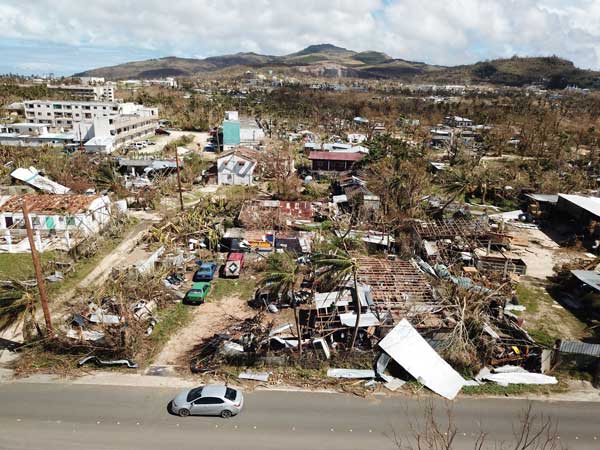3 years after Yutu
Super Typhoon Yutu, a Category 5 storm with 177 miles-per-hour winds, sliced through the CNMI three years ago in the midnight hours between Oct. 24 and 25, 2018, leaving behind a devastated Marianas that was still recovering from a similarly catastrophic typhoon in 2015, Typhoon Soudelor, also a Category 5 storm.
Since then, with the help of the Federal Emergency Management Agency and other government agencies, as well as several non-profit organizations, the question still lingers: Where are we now? These articles try to provide some answers.
Virginia C. Villagomez, the Governor’s Authorized Representative on Yutu, recalled that with Yutu’s devastation, families lost their homes and the government lost critical infrastructure to power and water, airports and seaports accessibility, public schools and other public utilities.
Before Yutu’s landfall, the government’s first responders were activated ahead to provide emergency protective measures, ensuring that shelters were open and functional. Public transportations were activated and critical humanitarian supplies were made available and sufficient to cover three days of sustainability.
“These were unforeseen expenses the government incurred to provide public safety from the impending storm,” she said.
Villagomez said the devastation and the magnitude of the damage were so significant after Yutu that stabilizing critical infrastructure services was estimated to take several months.
She said the government had to mobilize all available resources on the ground and from neighboring regions to clear access to public roads from debris necessary to make roads passable for emergency responders as well as the public.
Villagomez noted that the magnitude of the devastation exceeded their capacity and that they acknowledged that their partnership with the Federal Emergency Management Agency and the U.S. Department of Defense who were prepositioned to the Commonwealth pre-landfall tremendously helped with the response coordination.
“The presence of our partners gave us assurance of the unexpected,” she said.
Villagomez said the tyranny of distant in moving resources from abroad was challenging for the CNMI and its partners, knowing humanitarian relief supplies would be days away by flight and weeks or months away with shipping.
Relief supplies started to arrive as soon as ports became accessible for ships to dock and the runway was clear of debris for humanitarian flights to land.
Villagomez said all this coordination was tied to expenditures in which the government must provide for its non-federal cost share and more.
She said the impact of the disaster compounded, affecting businesses from the lack of export services and the tourism downturn. That resulted in the government’s operating revenues being severely affected, prompting the government to drastically reduce its projected revenues by more than 50%. (With Ferdie de la Torre)
























